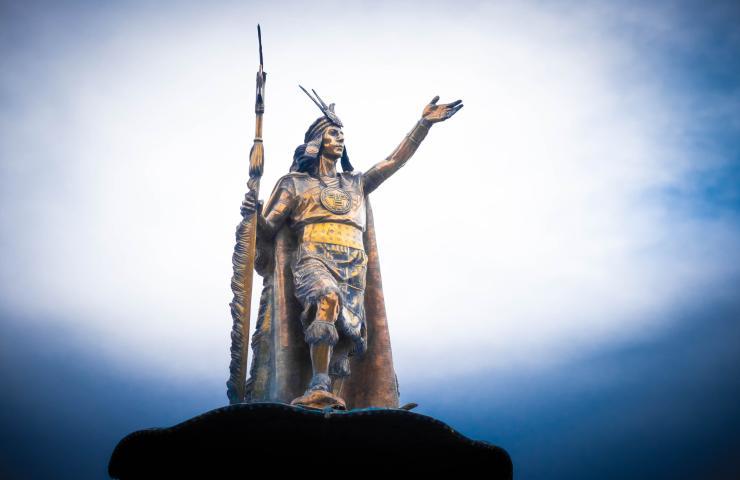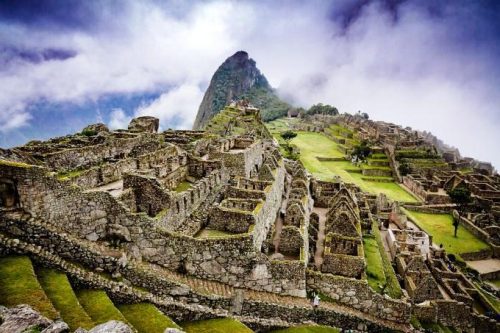Peru. The Feast of the Sun.

June 24th marks one of Peru’s main holidays: Inti Raymi, in the Quechua language, which means “Festival of the Sun”. It is the most important cultural event in Cusco, which was the capital of the empire.
The Inca Pacha Kutiq (1418-71) founded the Inca Empire. In the Quechua language, Inca means ‘lord’, ‘king’, ‘monarch’, ‘emperor’ or ‘chief’. However, spiritually, it meant that he was the ‘Son of the Sun God’, ‘Apu Inti ‘in Quechua, the creator god in whom he and the people believed.
The Inca Pacha Kutiq made the city of Cusco in southern Peru the capital of the Inca Empire, which extended north to southern Colombia and south to central Chile. Then, a hundred kilometres from Cusco, he ordered the construction of Machu Picchu, the imperial and holy city, at 2430 meters above sea level in the Andes.
The city of Machu Picchu, 530 meters long and 200 meters wide, included houses, plazas, shrines, temples, cemeteries and aqueduct systems. It also had stepped terraces for agriculture and animal husbandry, especially llamas.

The Inca Pacha Kutiq made the city of Cusco in southern Peru the capital of the Inca Empire. Pixabay
One of the most emblematic elements of the sacred city was the sun clock (Intihuatana), built of stone and located at the highest point of the city. In the 1430s, Pacha Kutiq established the Inti Raymi (Festival of the Sun) in the city of Cusco, to be celebrated annually on the day of the winter solstice in the southern hemisphere – the day on which the sun is furthest away from the Earth.
The ancient Incas followed the setting of the sun – Apu Inti (Sun God) – also called Apu P’unchau (God Day) – when the days grew shorter in the weeks preceding the winter solstice. To ask him to start his cycle again, to bring warmth and life back to Earth, a majestic ceremony was held, which was initially called Wawa Inti Raymi, or Festival of the Sun Child.
The population prepared for the feast by fasting for three days.
During this period, no bonfires were lit in the cities. But during the festival, the Inca Pacha Kutiq ordered a new fire to be lit and distributed to all the houses. At dawn on the day of the festival, which was attended by representatives of the entire empire, the Inca Pacha Kutiq went to the main square and waited for the sun to rise. When the sun rose, people knelt with their arms outstretched. The Inca Pacha Kutiq stood up and blessed the population with two golden vessels.

The esplanade of Sacsayhuaman a few minutes before the Inti Raymi celebration. CC BY-SA 3.0/ Martin St-Amant
The high priest then made animal sacrifices and, studying their hearts, made predictions. The ritual also involved offerings of corn, coca leaves, chicha (a handmade alcoholic drink made from coca) or fruit and potatoes to the earth, to ask the solar deity for a good harvest.
On the same occasion, the Inca Pacha Kutiq was reaffirmed as the supreme leader of the empire and the Sun was confirmed as the supreme entity that helps the harvests and keeps the population alive.
In 1572, forty years after the arrival of the Spanish in Peru, the Inti Raymi festival was banned by the Spanish viceroy Francisco de Toledo, who considered it a pagan ceremony and contrary to the Catholic faith. The last Inca participation in the celebration was in 1535. However, the Inca continued to celebrate the festival in secret away from the Spanish authorities, and a mestizo named Garcilaso de la Vega recorded the details in his famous work Comentarios Reales.
About 372 years passed and, in 1944, Faustino Espinoza Navarro, a Peruvian writer and actor from Cusco, decided to promote the recovery of the Festival of the Sun by carrying out a historical reconstruction.
Since then, the festival has established itself as a public cultural event and attracts over one hundred thousand tourists every year.
The Great Celebration
The sun always shines on June 24 in Cusco. On this day, more than 700 actors dressed in multimotored Inca costumes, condor feathers, quipos (a textile artifact composed of multicoloured ropes and knots), yellow broom flowers and corn chicha in their hands, welcome the other actors who play the Inca and his wife. The character playing the Inca Pacha Kutiq comes dressed in red with a crown of gold and feathers. The other actors play the high priest, the Incan nobility and the delegates of the empire. The staging takes place in three specific places of Cusco of great historical importance: Coricancha, Plaza Mayor and Sacsayhuaman.

Cusco. Inti Raymi at Sacsayhuaman. CC BY-SA 3.0/Cyntia Motta
The first act of the staging, in the Coricancha, the golden temple built by the Inca Pacha Kutiq, begins with the entry of the sinchi (the general of the Inca army), followed by the imperial army, by the acla, women chosen as wives and priestesses of the Sun, invested with sacred qualities. Then the t’ika t’aqaqkunas – women who spread flowers on the ground for the passage of the Inca king – and the pichaqkun (men responsible for chasing away evil spirits with straw vases).
Finally, the Inca Pacha Kutiq appears, with his wife (coya) and his kumillo, the one who carries the achiwa, a parasol made of coloured feathers, and the high priest Willaq Umu.
The Inca Pacha Kutiq and the high priest make the offering to the Sun, whose image is, as in the past, a golden circular figure. All this takes place to the rhythm of traditional music, dance and song.
The second act of Inti Raymi takes place in the Plaza Mayor, in the historic centre of Cusco, where the main altar is located.
The Inca general orders the entry of the army, musicians and delegates from the four regions of the empire. Then the Inca Pacha Kutiq arrives, carried on a litter by eight servants, and goes up to the main altar with the high priest, where the so-called Coca Ceremony takes place.
This consists of the sacrifice of a lama and the offering
of coca leaves to the Sun god.

Cusco. In March 2001, the Inti Raymi was declared a Cultural Heritage of Peru and a Ritual Ceremony of National Identity. CC BY-SA 3.0/Cyntia Motta
Finally, the Chuquipampa esplanade in the Sacsayhuaman fortress is the third and main act of the event. There, surrounded by an evocative musical atmosphere, the Inca Pacha Kutiq and his entourage arrive to pay respect and admiration to the Sun.
The Inca Pacha Kutiq recites a prayer in the Quechua language and simulates the sacrifice of a camelid, so that the high priest can predict prosperity and well-being for the following year.
The Inca Pacha Kutiq is then confirmed as the supreme leader of the empire and the Sun as the supreme entity who helps the crops and keeps the people alive. All the actors leave and the celebration ends.
The message of the Festival of the Sun is that its triumphal return on the shortest day and after the longest night reactivates nature and this is a reason for joy and celebration. Inti Raymi is not a celebration exclusive to Cusco, but to most of the Andean populations of the countries of the former Inca Empire, southern Colombia, Ecuador, Bolivia, Chile and northern Argentina. In March 2001, the Inti Raymi was declared a Cultural Heritage of Peru and a Ritual Ceremony of National Identity. (Open Photo: The golden statue of The Inca Pacha Kutiq in Cusco. 123rf
Fernando Félix



